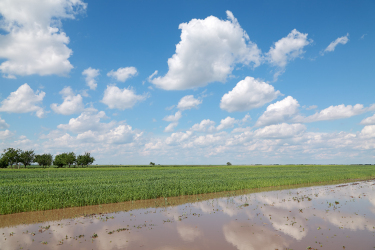Climate change
 Extreme weather events as a result of climate change is increasingly affecting the mycotoxin map in Europe and world-wide.
Extreme weather events as a result of climate change is increasingly affecting the mycotoxin map in Europe and world-wide.
In February - March 2013 Romania, Serbia and Croatia, reported aflatoxin M1 contamination of milk. Severe droughts in Serbia in 2012 resulted in 70% of the maize crop being contaminated with aflatoxins. Use of this maize to feed dairy cattle led to the high levels of aflatoxin M1 in milk, up to twice the EU legal limit. The milk scandal was fuelled when the permitted level of aflatoxin M1 in milk in Serbia was temporarily raised to 0.5 µg/kg milk, 10 times the EU legal limit. In recent years, a dramatic increase in DON contamination in Nordic countries has been observed. The Norwegian Scientific Committee for Food Safety concluded in a study published in 2013 that "The estimated mean and high (95-percentile) exposures to DON ...were in the range of, or exceeded the TDI by almost 2 times in 1-year-old infants and 2-year-old children and up to 3.5 times in years with high DON levels which has been especially true for oat based products".
On the other hand the catastrophic floods and the rainy summer in 2014 resulted in low levels of aflatoxin B1 with high levels of DON. Obviously, extreme weather conditions as a result of climate change is increasingly affecting the mycotoxin map in Europe and also world-wide.
